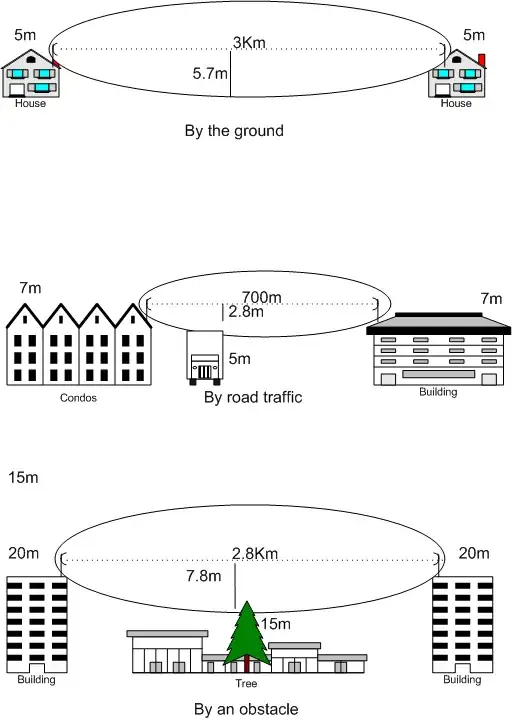I have recently been contracted by a client of mine to facilitate the wireless communication of his "home" offices and a secondary site.
The primary site is the top two floors of a 5-story office building (15m height more or less) an the secondary is one of two open "lots" (which one is TBD by management). The ground distance from the secondary sites is a little more than 2km for the one closer and around 2.9km for the one furthest.
The link will be used to transmit the video feed of 1 (or even possibly two) IP cameras and some kind of Ethernet-enabled environmental or weather sensor. I have checked the necessary b/w for the cameras and both 900Mhz and 5.8Ghz are more than adequate for even 4 of them, much more for 2. I have also verified that there is clear line-of-sight to both possible installation points and that the 60% Fresnel Zone clearance is more than covered. Bear in mind that this is my first long distance link (long with or without quotes) and I hate to admit that wireless physics is far from my strong suit.
The ultimate point of my question is that although I have read a lot about frequency choice the last few days, I continue to find some ambiguity (I know it is just me that finds it ambiguous). Most sources, like this one, agree that although the lower frequencies have less losses over a given distance (free-space-loss I learned it is called) they need larger antennae for the same "strength" of trasmission (is "gain" really the same as "strength"?).
So, for the given distance of 2-3km and given also that all typical requirements are met, which is preferable (or do I dare say "better") frequency? Should I choose 900Mhz with a relatively "small" antenna on the basis that 3km is not really "long distance" and that it will provide a link with less attenuation ergo less retransmits ergo higher overall speed? Or should I choose the 5.8Ghz option for the superior b/w (I am still not very sure about this, please correct me if wrong) on the basis that at this distance there is no real difference so why not take the "better" one?
On a side note, should I stay to the beaten path of true WiFi or should I consider proprietary bridging solutions like the ones from Ubiquiti? I have a lot of experience with their Access Points and am really satisfied, so I would not mind integrating one more of their products in my client. In any case, I am looking for an optimal solution, choice of vendor is of very little concern at this point.
Forgive my ignorance and the possible mistaken use of language.
UPDATE: I arranged to have a spectrum analyzer on loan for a couple of days. I will make sure that the 900Mhz band is reasonably clear and proceed down that way.
UPDATE 2: I had the aforementioned equipment available to play with for a day and a half. The conclusive finding is that the 9Mhz band is almost "empty" in the area, as one suggested here, so that takes care for the frequency choice issue.
Concerning the equipment now, I am going with Ubiquiti AirMax Yagi antennae and matching RM900 2x2 radios. Preliminary testing on my part and from the client's employees shows that performance exceeds expectations.
On a side note, the chosen "lot" is the one that is 3km away.
